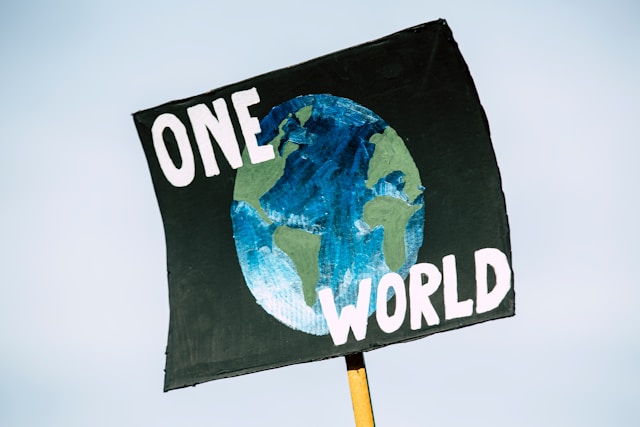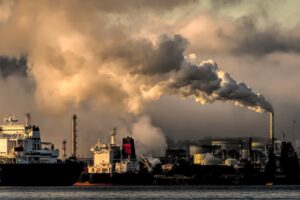The Unfolding Climate Crisis: How Wildfire Smoke, Heatwaves, and Disasters Are Reshaping Our World in 2025
As we pass through the heart of 2025, the escalating impacts of climate change, pollution, and natural disasters have never been clearer — or more urgent. Across the United States, Canada, Australia, and the United Kingdom, recent months have delivered a barrage of extreme weather events, each offering a warning of what’s to come if decisive action isn’t taken. Let’s dive into this recent wave of environmental crises, their real-life consequences, and what governments and scientists are doing in response.
United States: Choking on Smoke Amid Political Uncertainty
Late July and early August have seen the U.S. Midwest shrouded in a dense, hazardous haze as smoke from Canadian wildfires drifted southward. Minnesota — known for its clear lakes and forests — found itself enduring the longest air quality alert in its history, tying with the notorious Greenwood Fire event of 2021. Cities and towns across Minnesota, Wisconsin, Michigan, and New York watched as their Air Quality Index (AQI) numbers soared into unhealthy, and at times, dangerous levels. Sensitive groups — children, seniors, people with respiratory conditions — faced the greatest risks.
The response was swift but sobering. The Minnesota Pollution Control Agency extended air quality alerts, recommending that people stay indoors, run air conditioners with HEPA filters, use standalone air purifiers, and wear N95 masks outside. Local news warned not to underestimate particulate pollution: PM2.5, the tiny particles in wildfire smoke, can exacerbate asthma, trigger cardiovascular issues, and lower overall immunity.
But perhaps the most concerning backdrop to this crisis is policy turbulence at the national level. The U.S. Environmental Protection Agency (EPA) is caught in political crossfire, with debates raging over the potential repeal of climate-focused regulations. Changes to the EPA’s landmark endangerment finding — which underpins federal greenhouse gas controls — could have sweeping consequences, raising questions about America’s future commitment to climate action.
All of this comes at a time when the link between climate change and worsening wildfire seasons is universally acknowledged by scientists.
Canada: Wildfires and Heatwaves in a Climate Hotspot
North of the border, Canada is battling on several environmental fronts. The wildfires fueling U.S. air pollution have been raging for weeks, daunting both emergency responders and citizens. But it’s not just fire — punishing heatwaves are becoming a new normal. In May 2025, Alberta recorded temperatures 6–13°C above historical averages, with attribution science confirming that these extremes are several times more likely due to human-driven climate change.
The consequences ripple outward. Not only is Canada’s own populace facing smoke, evacuations, and soaring emergency costs; the neighboring U.S. is directly inhaling the results. Studies and real-time measurements confirm that Canadian wildfire smoke can deteriorate air quality thousands of kilometers away.
In terms of policy, Canada’s government has taken several steps forward. Its 2030 emissions targets have recently been improved, but watchdogs caution they’re still “insufficient” to reach the Paris Agreement’s 1.5°C goal. Canadian institutions and officials are using these events to push for more robust emission cuts, climate adaptation, and stricter land-management policies.
Australia: Storms, Floods, and the Cost of Climate Vulnerability
On the other side of the globe, Australia is facing the relentless impacts of a warming world. From May through August 2025, states across New South Wales and Northern Queensland contended with a cascade of natural disasters: severe storms, record-breaking floods, and outbreaks of bushfires. The scale of human and economic loss has pushed multiple local government areas (LGAs) to the brink, prompting both state and federal authorities to declare official disaster zones.
North Queensland’s devastating floods earlier in the year (January–February) prompted swift action from the federal government, which released disaster recovery payments to affected residents and businesses. Subsequent emergencies saw further assistance — infrastructure support, emergency housing, and business aid — as communities worked to recover.
These responses, however, are reminders that Australia is now among the most disaster-prone countries globally. Climate change is increasing the severity, frequency, and unpredictability of the nation’s weather extremes, challenging traditional disaster-readiness and sparking debate over tougher resilience standards.
United Kingdom: Preparing for a Future of Extremes
While the United Kingdom hasn’t recorded a singular catastrophic event this August, the long-term picture is crystal-clear: climate change’s fingerprints are everywhere. The nation recently wrapped up its wettest 18-month stretch on record (ending March 2024), with recurring floods, infrastructure failures, and significant crop losses. Urban areas and millions of homes are now at heightened risk of future flooding, while new extremes in heat are stretching health and transport systems to their limits.
In the face of these evolving threats, the UK government and its Committee on Climate Change are doubling down on adaptation and resilience. National reports are leading the charge for infrastructure redesign — from more flood-resistant urban planning to reinforced roads and rail lines, and investments in smarter water management.
The message from both officials and scientists is unequivocal: adaptation is no longer tomorrow’s problem, but today’s imperative.
The Road Ahead: What These Crises Mean for Us All
Across continents and climates, several themes unite these stories. Human-caused climate change is amplifying extreme weather and disasters — wildfires burn hotter, storms hit harder, and floods inundate places long considered safe. Air pollution, once a local issue, is now a transboundary threat. And for every immediate government response, calls for deeper, long-term climate policies only grow louder.
Yet there is hope amid the crisis. Nations are advancing new climate targets, investing in adaptation, and socializing the realities of our new climate era. But as scientists and frontline communities attest, the clock for meaningful change is ticking fast.
If 2025 has shown us anything, it’s that there’s no such thing as distant climate impacts. Whether it’s smoke on the horizon or floods lapping at our doors, the climate era has arrived — and demands action from each of us, before the next crisis strikes.
Citations:
- CNN: “Record wildfire smoke causes air quality alerts across U.S. Midwest,” Aug 2, 2025.
- NYTimes: “Health warnings as Canadian wildfire smoke sweeps U.S. cities,” Aug 2, 2025.
- Reuters: “Canada faces intense heat, wildfires; climate change cited as cause,” July 2025.
- Reuters: “Australia floods prompt disaster declarations in NSW, Queensland,” July 2025.
- BBC: “UK climate report: Wettest winters, new heat records, more floods,” July 2025.







